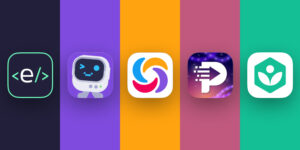
If you are an educational institution, business, or individual who wants to facilitate online learning, checking free learning management software for schools would be a good idea. These provide different functionalities depending on your requirement, and best of all, they are entirely free. This post reviews a few popular choices, what they do well, and what they lack.
Key Features to Consider
When selecting a free learning management software, there are some features that you simply cannot go without. An easy-to-use interface allows teachers and learners to navigate the platform easily. Customization enables personalized learning experiences. Integration ability with other tools increases functionality and simplifies educational content management. This approach allows trainers to track learner progress and engagement through reporting and analytics features. Finally, mobile access guarantees that learning occurs anytime, anywhere.
Top Free Learning Management Software Solutions

A few free options stand out because of their features or usability. Each one offers many benefits and is suitable for different needs and places.
Moodle
Moodle is, of course, a common name in education. The possibilities for customization are virtually limitless, and teachers can customize their courses to meet particular needs. It supports all kinds of plugins that help to broaden its functionality. However, its broad feature set can be overwhelming to newcomers and requires a learning curve to master.
Google Classroom
Schools and educators love Google Classroom for its simplicity and easy integration with other Google offerings. It simplifies teacher-student communication and makes distributing assignments and getting feedback easy. It’s the easiest to use, but it doesn’t provide as much flexibility in customization as others.
Canvas
Canvas has a simple and easy-to-use interface, which makes it user-friendly for teachers and students. It has strong analytics for monitoring student progress and engagement. Free access is feature-rich, but often limited in storage and features.
Schoology
Another popular platform is Schoology, which many often use because of its social media-type appearance. Discussion boards and group projects facilitate this cooperation. It integrates with third-party apps, too, so it can do even more. Some of the more advanced features may require a paid upgrade.
Edmodo
Edmodo is a mix of social networking and education. It enhances the interaction and involvement of students and teachers. Parents can participate, too, which gives a complete picture of the student’s progress. It has a more casual vibe, which is appealing but doesn’t provide the same depth of analysis.
Strengths and Limitations
Each platform has several benefits and disadvantages. Moodle provides various customization options and plugin support, but the wide range of choices can be overwhelming. Google Classroom’s simplicity, which makes it easy to use, may result in weaker customized options. Analytics are available, but there may be a storage limit. Canvas and Schoology promote collaboration, but their advanced tools are a paid feature. The former encourages interaction, though it may lose depth in the analysis.
Choosing the Right Platform
Choosing the right platform will always depend on specific needs and goals. If you want something highly configurable, then Moodle is the right path forward. Google Classroom might appeal to people who want something way simpler, integrated into all the tools they use regularly. Canvas suits institutions that wish to supplement the basic system with more granular tracking data analysis. Those who value collaboration will delight in Schoology, while Edmodo is better suited for classrooms that require high levels of interaction.
Implementation Tips
Implementing a learning management system is no cakewalk, and it requires ample planning. Step one is to make sure that you at least understand what the institution needs. Training for educators and students offers a smooth transition. When they receive regular feedback, areas of improvement are identified. Lastly, keeping on top of changes with the platform means you maintain that effectiveness.
Also Read: How to Build a Remote Learning Culture with Education Software Development
Conclusion
Free learning management software allows educators and organizations to expand their educational offerings at no cost. Different platforms have different features for various purposes. By considering key features, pros, and cons, one can decide what is the finest learning experience. When implemented correctly, these tools can transform teaching and learning, which allows for a more stimulating and efficient learning space.






